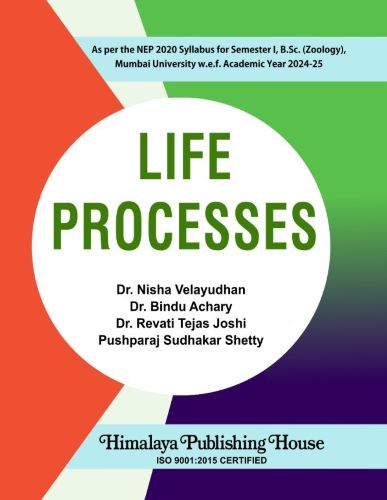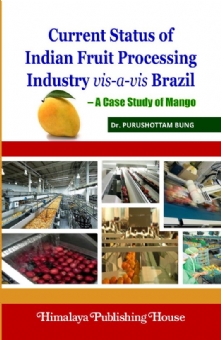This book has been written with the F.Y. B.Sc. Zoology syllabus in mind. We have dealt with the core needs of the learner in simple language and designed as per the new of the curriculum requirement. The study of life processes delves into the very essence of what it means to be alive. From the microscopic dances of cells to the grand interplay of ecosystems, life processes encompass a vast array of biological phenomena that sustain and propagate life on Earth. It helps the leaner to have an insight about the various life processes like‒locomotion, respiration, circulation, nutrition, excretion and osmoregulation, control and coordination, reproduction, etc.
The importance of understanding such processes is to get an insight into the body functions. The basic know-how about our body function helps us to live a better life. The common and simple change health conditions can be avoided by simple in our lifestyle. Each chapter is crafted to unravel the layers of scientific understanding that explain how living beings interact with their environment, adapt to changes, and evolve over time.
Contents –
Module 1 ‒ Life Processes ‒ 1
1.1 Movement and Locomotion
1.1.1 Amoeboid Movement, Tube Feet, Flagellum
1.1.2 Ultra-structure of Cilia and Ciliary Movements
1.1.3 Action of Muscles (Role of Muscles in Movement)
1.2 Nutrition
1.2.1 Types of Nutrition: Autotrophic and Heterotrophic
1.2.2. Apparatus for Nutrition
1.2.2.1 Animals without Alimentary Canal
1.2.2.2 Animals with Incomplete Alimentary Canal
1.2.2.3 Animals with Complete Alimentary Canal
1.2.3 Brief Account of Physiology of Digestion in Vertebrates and Symbiotic Digestion in Ruminants
1.3 Respiration
1.3.1 Aerobic and Anaerobic Respiration
1.3.2 Types of Respiratory Surfaces
1.3.2.1 General Body Surface: Cell Membrane ‒ ex. Amoeba,
1.3.2.2 General Body Surface: Skin ‒ ex. Earthworm and Frog
1.3.2.3 Trachea and Spiracles
1.3.2.4 Gills of Fish
1.3.2.5 Accessory Respiratory Organ in Fish
1.3.2.6 Lungs of Human
1.4 Circulation
1.4.1 Types of Circulating Fluids
1.4.1.1 Water
1.4.1.2 Coelomic Fluid
1.4.1.3 Lymph
1.4.1.4 Blood
1.4.2 Types of Circulation
1.4.2.1 Protoplasmic Streaming
1.4.2.2 Open and Closed Circulation
1.4.2.3 Single and Double Circulation
1.4.3 Hearts Types
1.4.3.1 Heart in Daphnia
1.4.3.2 Heart of Cockroach
1.4.3.3 Heart in Chordates (2, 3 and 4 Chambered Heart)
1.5 Questions
Module 2 ‒ Life Processes ‒ 2
2.1 Excretion and Osmoregulation
2.1.1 Concepts of Excretion and Osmoregulation
2.1.2 Categorisation of Animals on the Basis of Principle Nitrogenous Excretory Products
2.2 Concept and Co-ordination
2.2.1 Irritability in Paramecium
2.2.2 Structure of Neuron
2.2.3 Conduction of Nerve Impulse
2.2.3.1 Resting Potential
2.2.3.2 Action Potential
2.2.3.3 Refractory Period
2.2.4 Endocrine Regulation
2.2.4.1 Hormones as Chemical Messengers
2.2.4.2 Feedback Mechanisms
2.3 Reproduction
2.3.1 Asexual Reproduction
2.3.1.1 Asexual Reproduction in Paramecium
2.3.1.2 Gemmule in Sponges
2.3.1.3 Budding in Hydra
2.3.1.4 Regeneration in Planaria
2.3.2 Sexual Reproduction
2.3.2.1 Gametogenesis
2.3.2.2 Structure of Human Sperm
2.3.2.3 Structure of Ovum
2.4 Fertilisation
2.4.1 External and Internal Fertilisation
2.5 Questions






